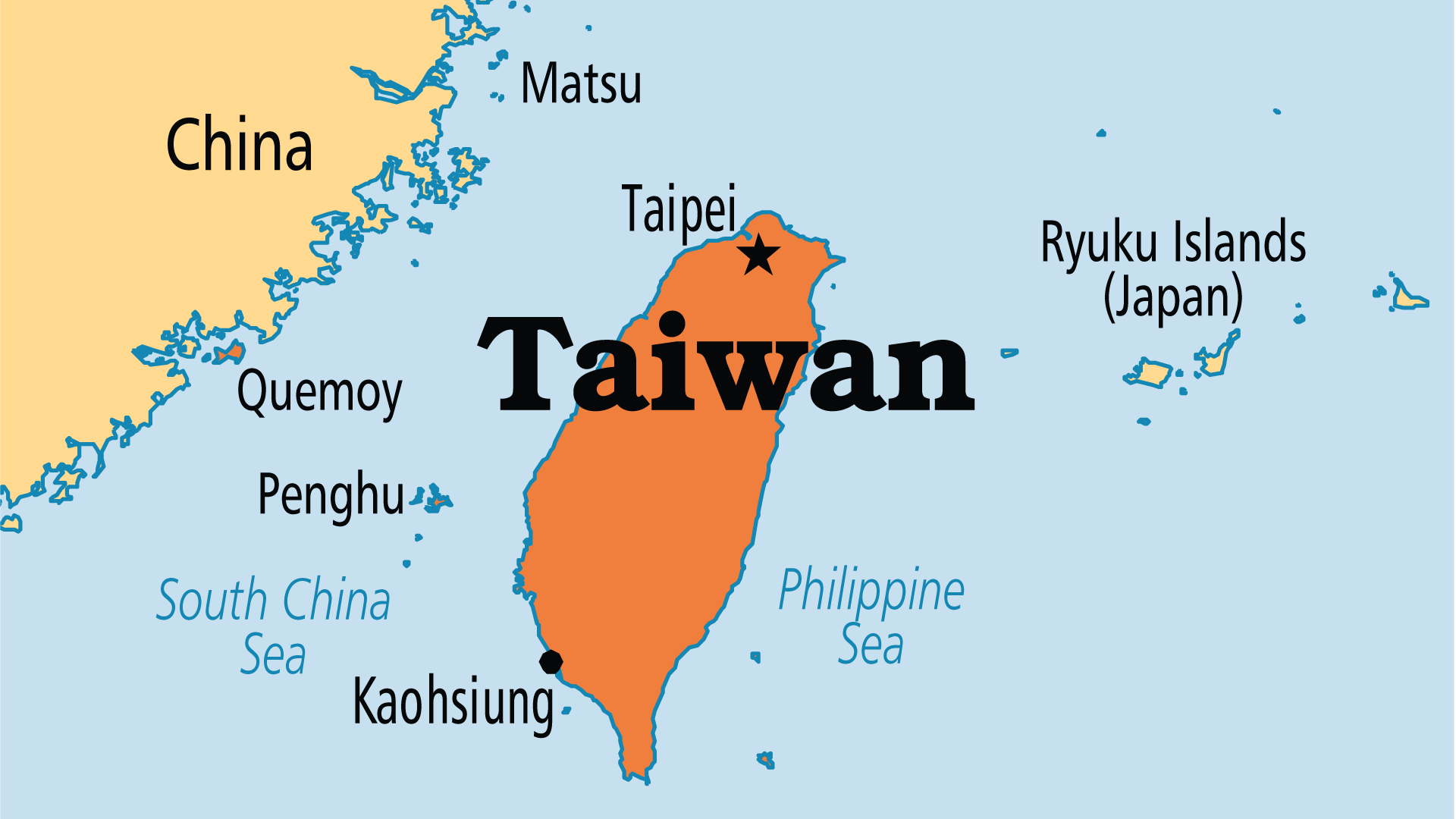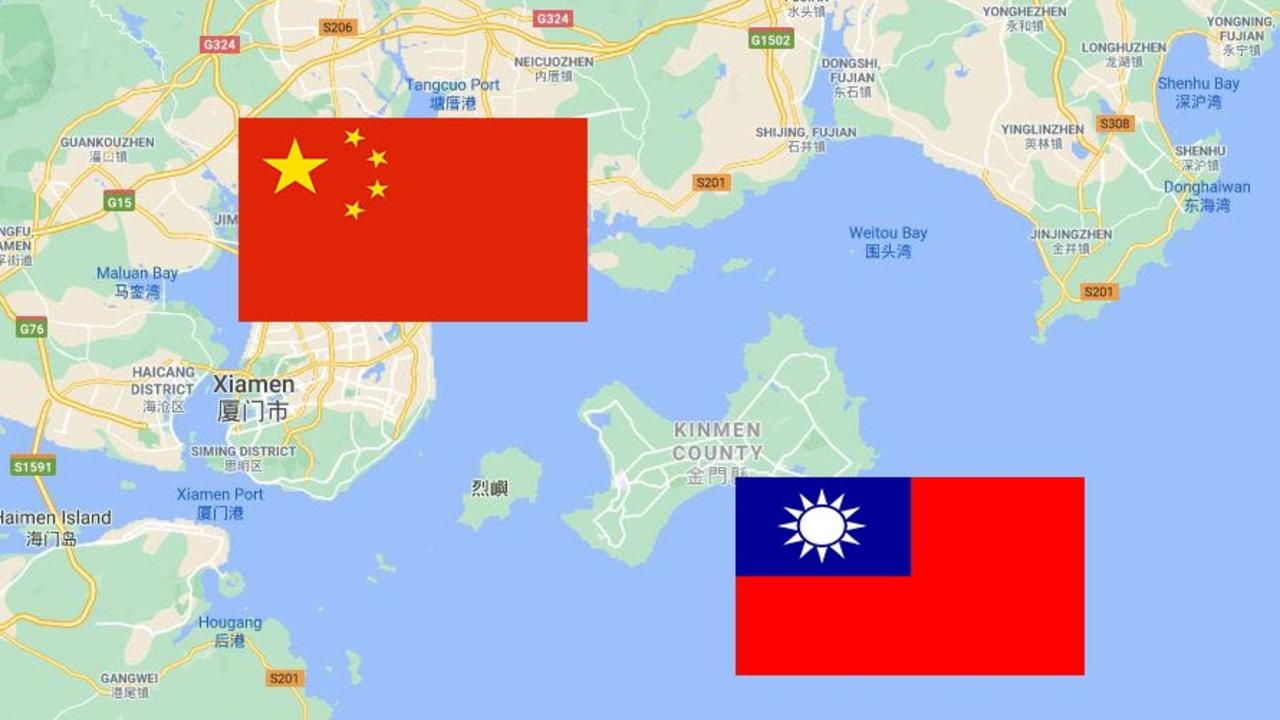Matsu And Quemoy - He is, isn't he? As the world tries to unravel US President Joe Biden's seemingly contradictory statements about possible US intervention in the looming conflict between China and Taiwan, the latter has backed its defense against a belligerent China.
With the Russia-Ukraine war still raging after more than three months, Taiwan fears that the ambitious Xi Jinping, who wants to step into Mao's shoes, will attack the island under the One China Policy (OCP). strengthen the image of his iron just in time for his third re-election.
Matsu And Quemoy

Heralded as the most important event of the decade, the Chinese Communist Party (CCP) is gearing up for its 20th National Congress, which will be held in Beijing this November, with around 2,300 delegates representing 90 million members. Until now, Xi's election was believed to be a mere formality for China and not something drastically wrong.
Cina E Taiwan, Come Sarebbe Lo Scontro Militare
Meanwhile, the small island nation has begun a flurry of military exercises across the Taiwan Strait and has angrily observed Ukraine's defensive tactics.
Residents of Taiwan's Matsu Islands now fear Chinese planes buzzing the skies. They believe that if #Russia can invade #Ukraine, then the Chinese can do the same to Taiwan. Mohammad Saleh says more For more videos visit https://t.co/AXC5qRcEPB pic.twitter.com/5LTte1GToO — WION (@WIONews) March 26, 2022
If China did go to war, the islands of Taiwan, which had experienced war in the 1950s, would once again find themselves on the front lines. Defense Minister Chu Kuo-cheng has already informed Parliament that China is capable of attacking remote islands and that Taiping Island must be ready at all times.
That if China wants to occupy Taiwan, it must first acquire the remote islands and then blockade the waters to prevent the US or Japan from coming to Taiwan's aid.
A Foodie's Stinky Tofu Tutorial In Taiwan
Citing an earlier example, Hasia said: "In the First Taiwan Strait Crisis in 1955, China seized the Jijianshan Islands, which forced Taiwan to leave the Tahen Islands. Then, in the Second Taiwan Strait Crisis in 1958, China shelled Kinmen and Matsu Islands. But the US intervened, and Taiwan could maintain these islands."So this is the first wall of defense that China will break through in the event of a military attack."
Kinmen Island is located almost two kilometers from mainland China, while they are located almost 180 km from the west coast of Taiwan. Hassia said, "The Kinmen Islanders are satisfied with China and even look forward to the construction of the bridge by the United Front Work Department of China (UFWD). You must understand that millions of people emigrated from mainland China in 1949 so that generation still feels like Chinese."
Today we remember all those who fought to defend Kinman Island 70 years ago. Peace cannot be achieved by violating one's beliefs or bowing to others. We need a strong national defense and a sense of solidarity to show the world that we are determined to defend our sovereignty. pic.twitter.com/LyneAYVTbW — 蔡英文 Tsai Ing-wen (@iingwen) October 23, 2019

Also near China are the Matsu Islands, which is more of an archipelago consisting of dozens of islands. Taiwan has deployed tens of thousands of troops on the islands.
China's Latest Weapon Against Taiwan: The Sand Dredger
Although China has not attacked the two islands in decades, Taiwan continues to build fortifications, air raid shelters and tunnels on the islands. Taiwan is believed to have deployed anti-tank and anti-aircraft weapons to defend the island. Recently, many tunnels and forts have become tourist attractions and some have been converted into teahouses.
Recently, Taiwan claimed that the Chinese Air Force had flown its plane near the archipelago. Experts speculate that it could be China testing the waters for a response from Taiwan or America.
A rocky outcrop about 3km off China's coast on Taiwan-controlled Kinmen Island is a memorial to a group of veterans recalling their role as a front line between China and Taiwan during the Cold War. pic.twitter.com/tRA6ZlWI3e — ANews (@anews) October 26, 2021
Hasie said: "Of course, China has been training for an attack. What might be needed is a large landing craft and a medium-sized landing craft needed for a large-scale coastal attack. We know that the PLA Navy is very strong. If the US does not intervene, Taiwan will have difficult to win, however, looking at Ukraine, you can't judge what to expect".
The Cold War
Currently, the US and China have deployed aircraft carriers in the waters around Taiwan. As China conducts military exercises around Taiwan and also on the Korean Peninsula, the US has responded by enlisting the support of Western and quadrature nations. Like restive Taiwan, Japan is joining the US in bolstering defenses against China in the Indo-Pacific region.
While both countries tested the resolve of regional nations, it was a tense throwback to the 1950s for the island of Taiwan. In 1949, when the Communists led by Mao Tse-tung consolidated their power over the country, President Chiang was overthrown. Kai-shek took his 1 million followers to Taiwan. The only thing he and Mao had in common was their insistence that Taiwan remain part of China. The Nationalist-controlled islands of Jinmen (Chin-men in Wade Giles, but often called Kinmen or Quemoy) and Mazu (Ma-tsu in Wade-Giles), just 8 miles off the coast of mainland China, between Taiwan and mainland China. , is occupied by Chiang Kai-shek's army, but claimed by Communist China. Matsu is a single island, while Quemoy is a group consisting of Quemoy, Little Quemoy and 12 small islands in the Xiamen Gulf.
Chiang established these two islands as a base for the conquest of China. Chiang provoked China twice by moving large numbers of troops to the islands, and both times the US responded with military action, including nuclear threats, in support of Chiang's provocations.
On January 5, 1950, President Harry Truman announced that "the United States will not become involved in the Taiwan Strait dispute," which meant that America would not intervene if Communist China attacked Taiwan. However, on June 25, 1950, the Korean War began, and President Truman responded by declaring the "Neutralization of the Formosa Strait" on June 27. The Seventh Fleet was sent to the strait with orders to prevent any attack on the island and also to prevent Kuomintang forces from attacking China. Since then, Taiwan has been under the protection of the US military. First Taiwan Strait Crisis August 11, 1954 - May 1, 1955
Matsu Eilanden Rood, Gemarkeerd Op Kaart Van Taiwan Stock Illustratie
During the first Taiwan Strait Crisis, the People's Liberation Army launched a heavy artillery attack on the offshore island of Quemoy after the US lifted its embargo on Taiwan, allowing the Nationalists to attack mainland China. The Truman administration has rejected calls by hardliners to "free Chiang Kai-shek." But shortly after his inauguration on February 2, 1953, President Eisenhower lifted the US Navy's blockade of Taiwan, which prevented Chiang's forces from invading mainland China. In August 1954, Chiang moved 58,000 troops to Kwemoi and 15,000 to Matsu. Zhou Enlai announced on August 11, 1954 that Taiwan must be liberated. On August 17, 1954, the United States warned China against taking action against Taiwan, but on September 3, 1954, the Communists began an artillery bombardment of Kwayama, and in November, PLA aircraft bombed the Tahen Islands. On September 12, 1954, the US Joint Chiefs of Staff (JCS) recommended the possibility of using nuclear weapons against China. And on November 23, 1954, China sentenced 13 US airmen shot down over China in the Korean War to long prison terms, prompting continued consideration of a nuclear strike against China. Despite domestic political pressure, President Eisenhower refused to bomb mainland China or use American troops to resolve the crisis. At the insistence of Senator Knowland, the United States signed a Mutual Defense Treaty with the Nationalist government of Taiwan on December 2, 1954.
On January 18, 1955, Chinese ground forces captured Yijiangshan [Yichian] Island, 210 miles north of Formosa, and completely destroyed the ROC forces stationed there. The two sides continued to fight in Kinmen, Matsu and the coast of mainland China. The fighting even extended to mainland China's coastal ports. The Mutual Security Pact between the United States and Nationalist China, which does not cover islands on the Chinese mainland, was ratified by the Senate on February 9, 1955. The Formosa resolution was adopted by both houses of Congress on January 29, 1955. for the Defense of Taiwan, authorized the President to use American troops to defend the Formosa and Pescadores Islands from armed attack, including other areas suitable for their defense.
On February 15, 1955, British Prime Minister Winston Churchill advised against US nuclear defense against Kwemoi-Matsu. But on March 10, 1955, US Secretary of State Dulles announced at a meeting of the National Security Council (NSC) that the American people should be prepared for a possible nuclear attack against China. Five days later, Dulles publicly announced that the United States was seriously considering using atomic weapons in the Quemoya-Matsu area. And the next day
Quemoy and matsu crisis, quemoy matsu crisis, quemoy matsu, sushi matsu, quemoy and matsu, matcha matsu, matsu dental, matsu, quemoy neighbor, matsu glacier, matsu japanese, quemoy

0 Comments